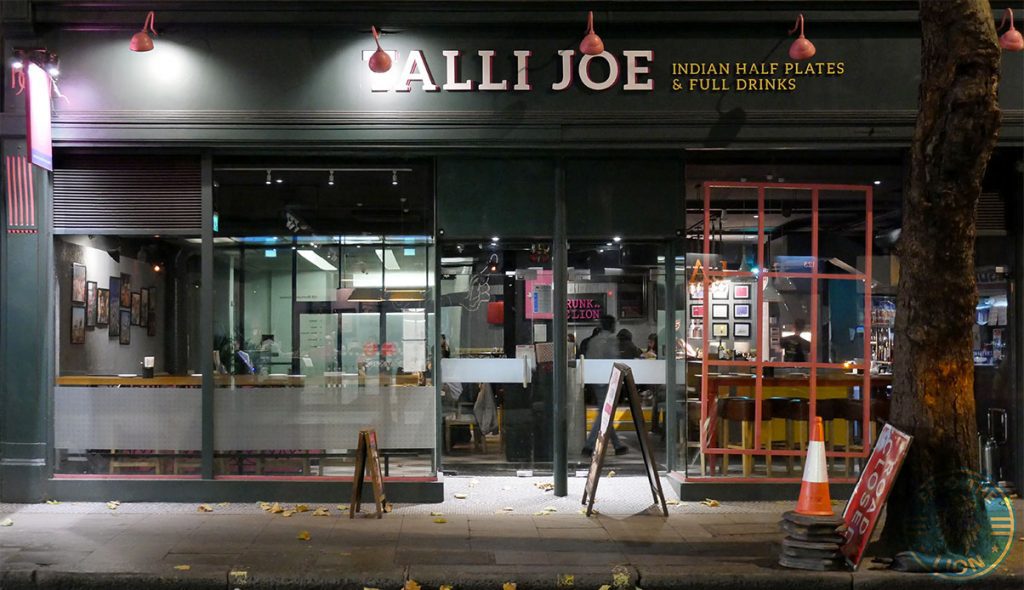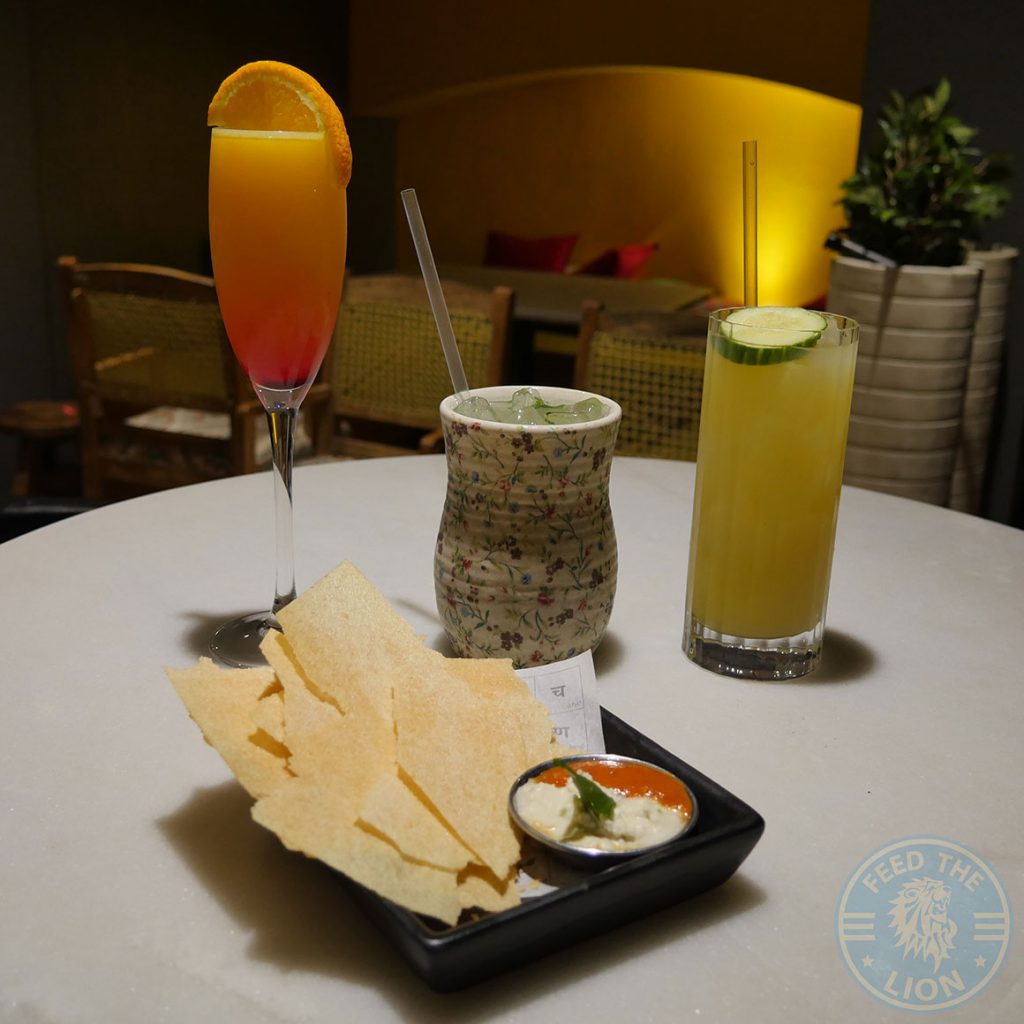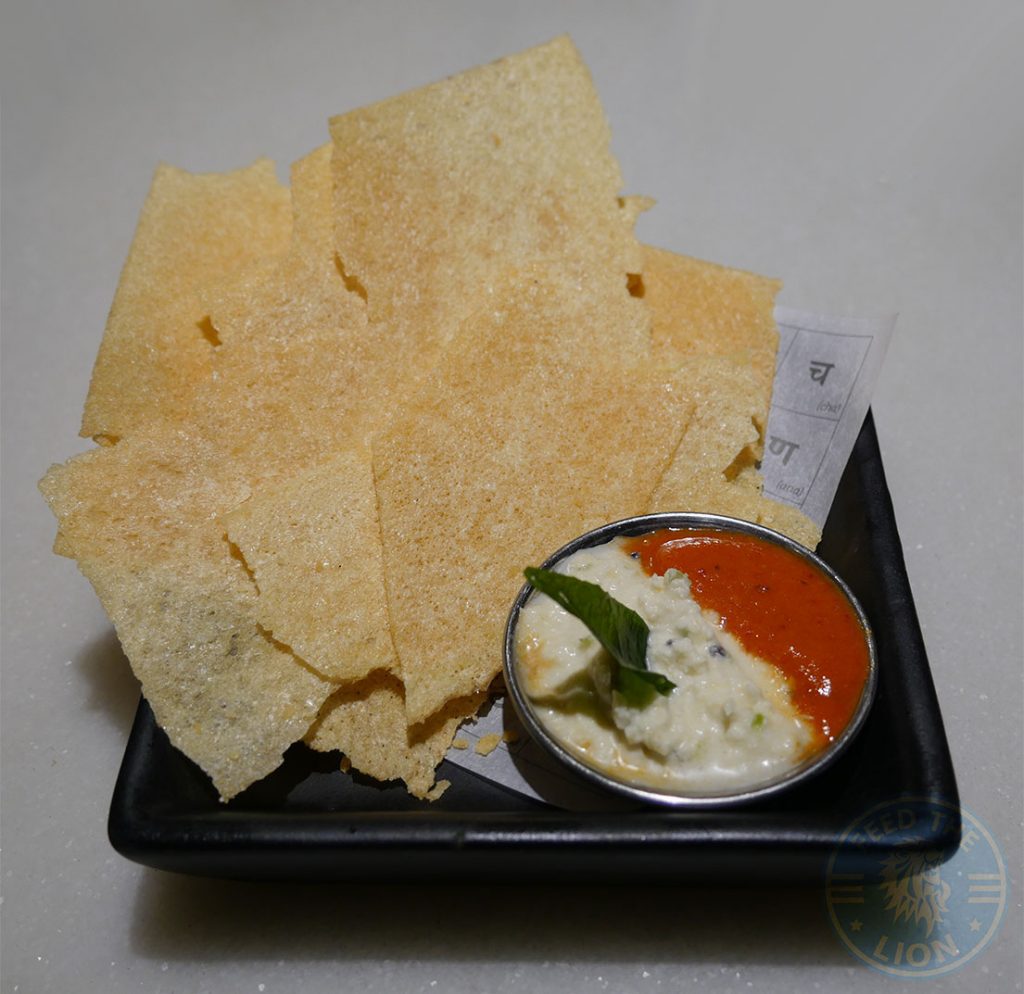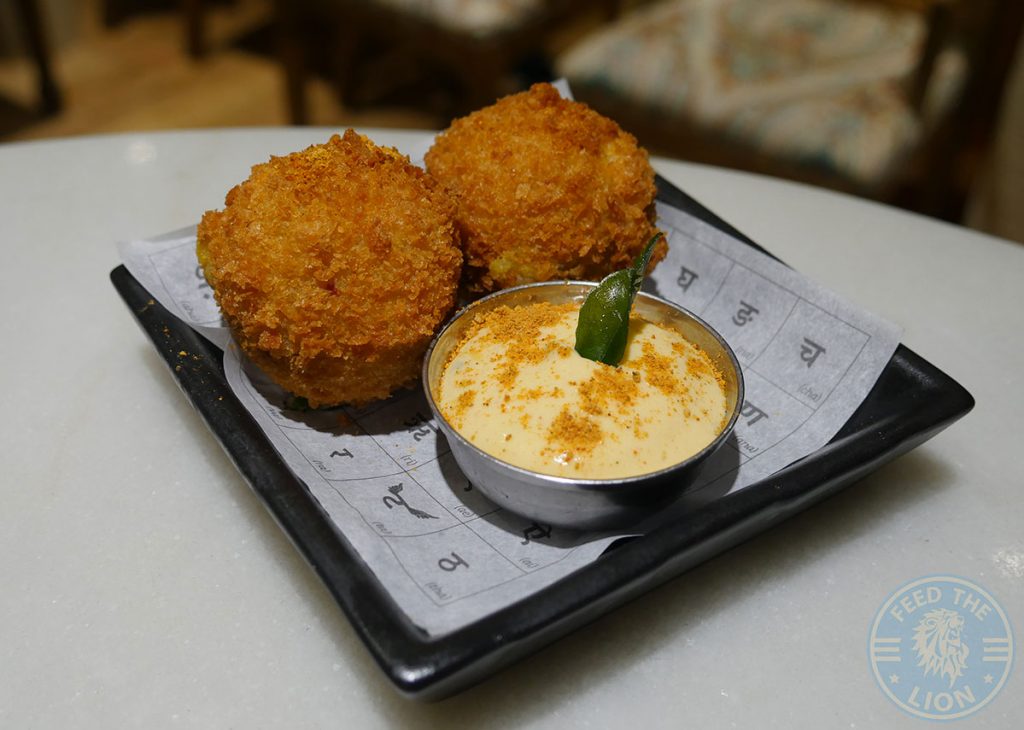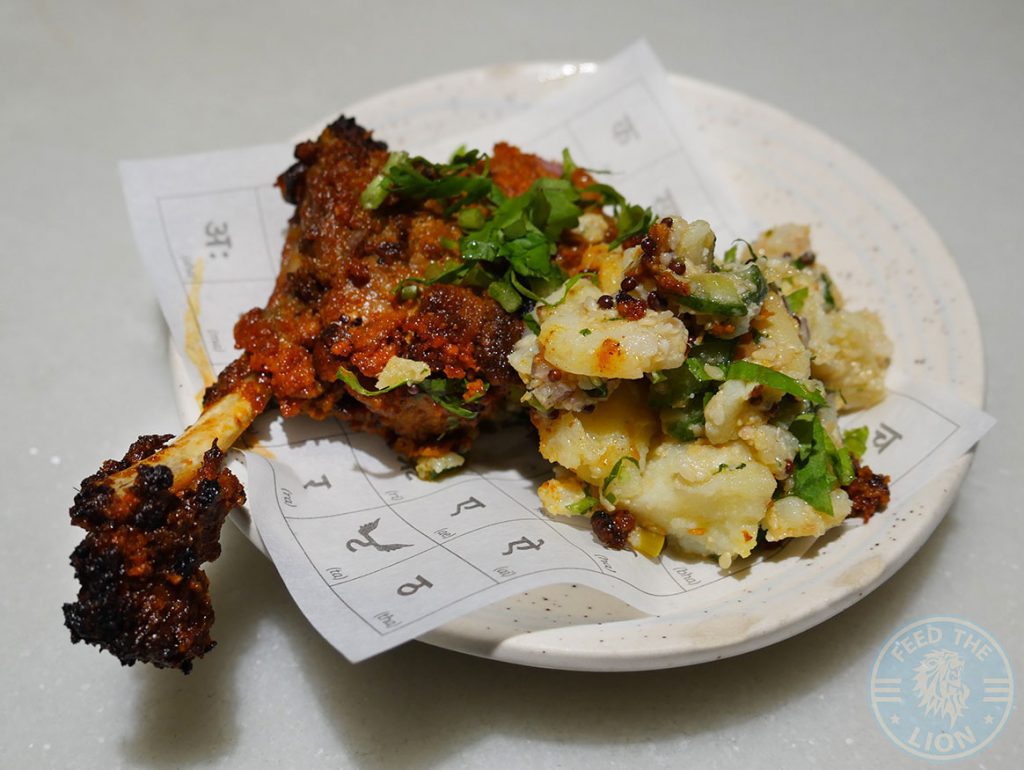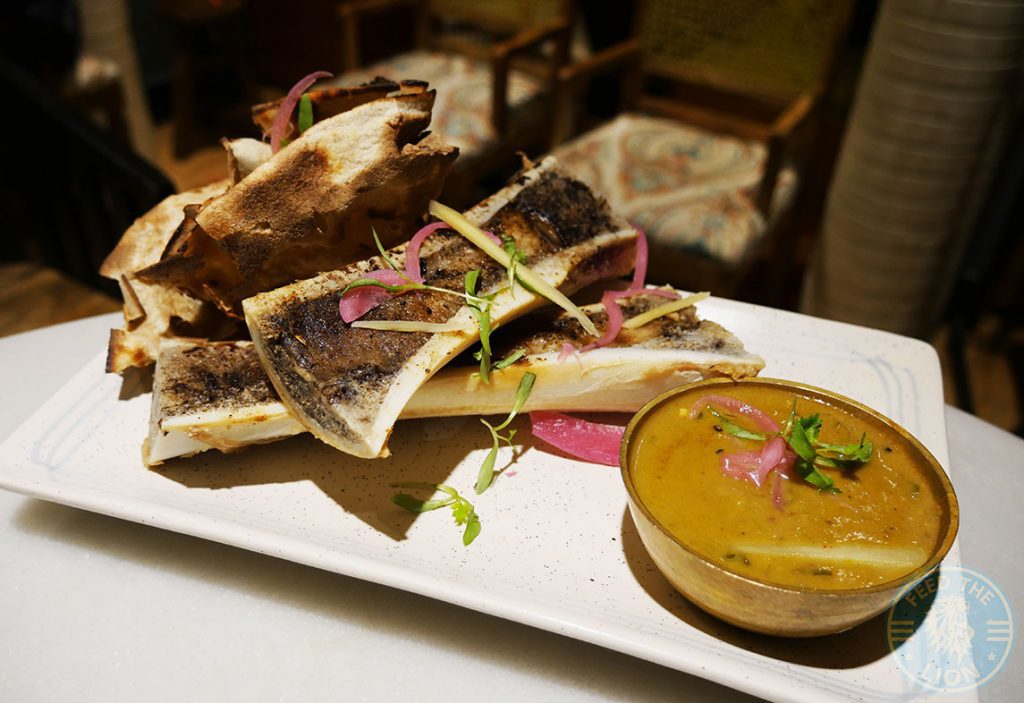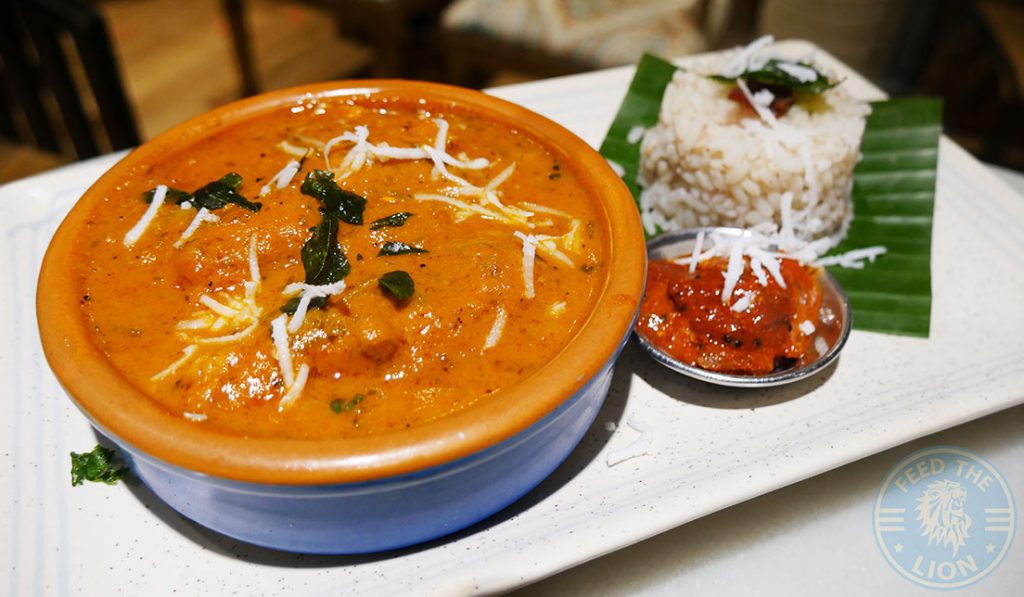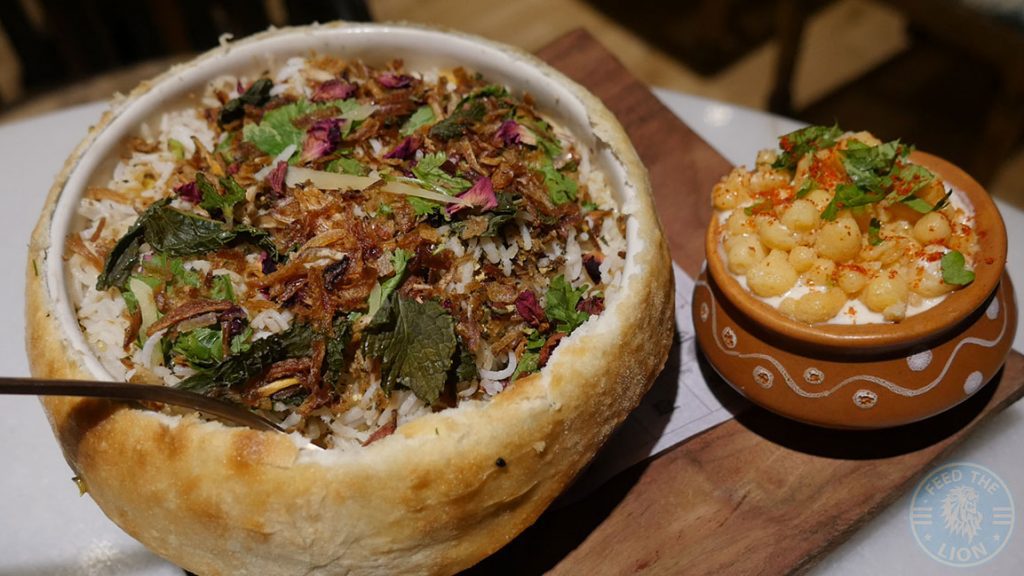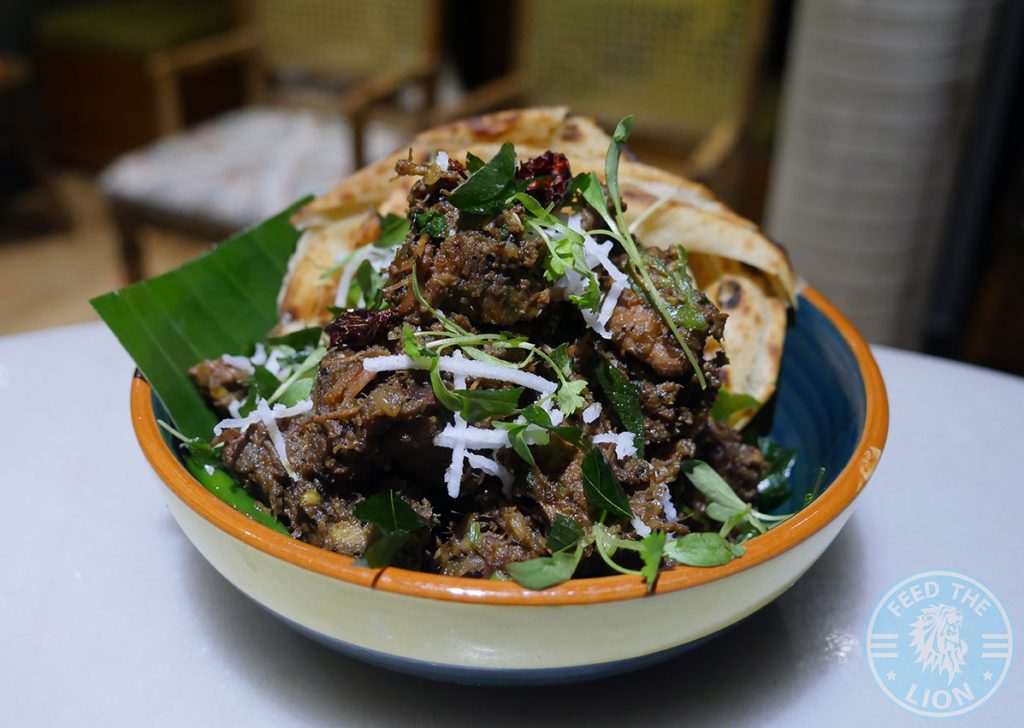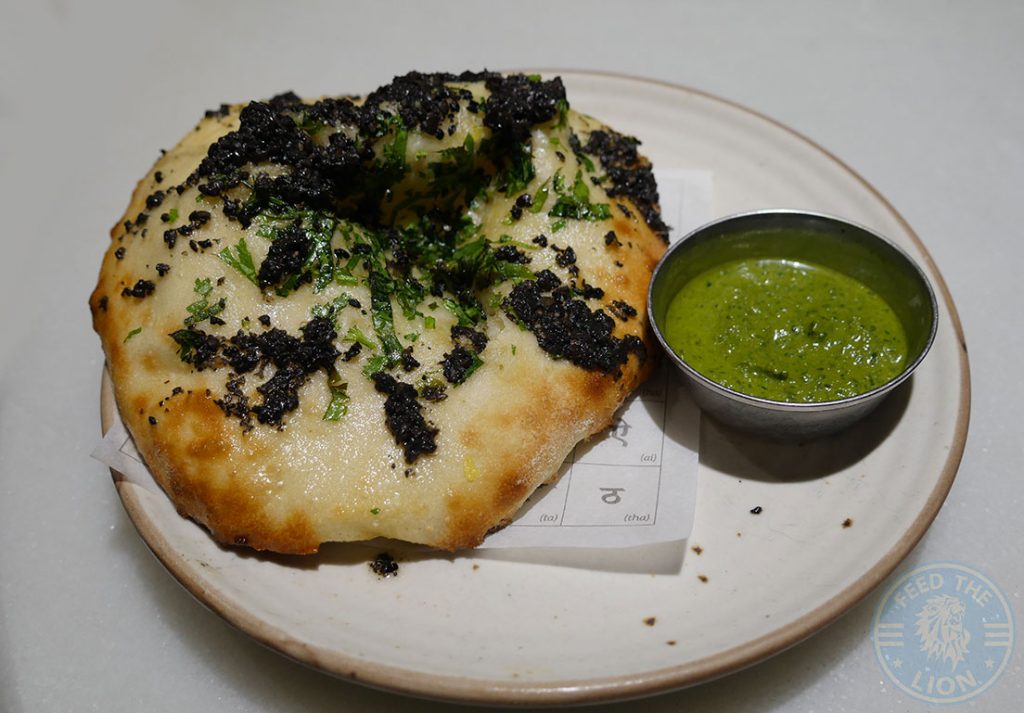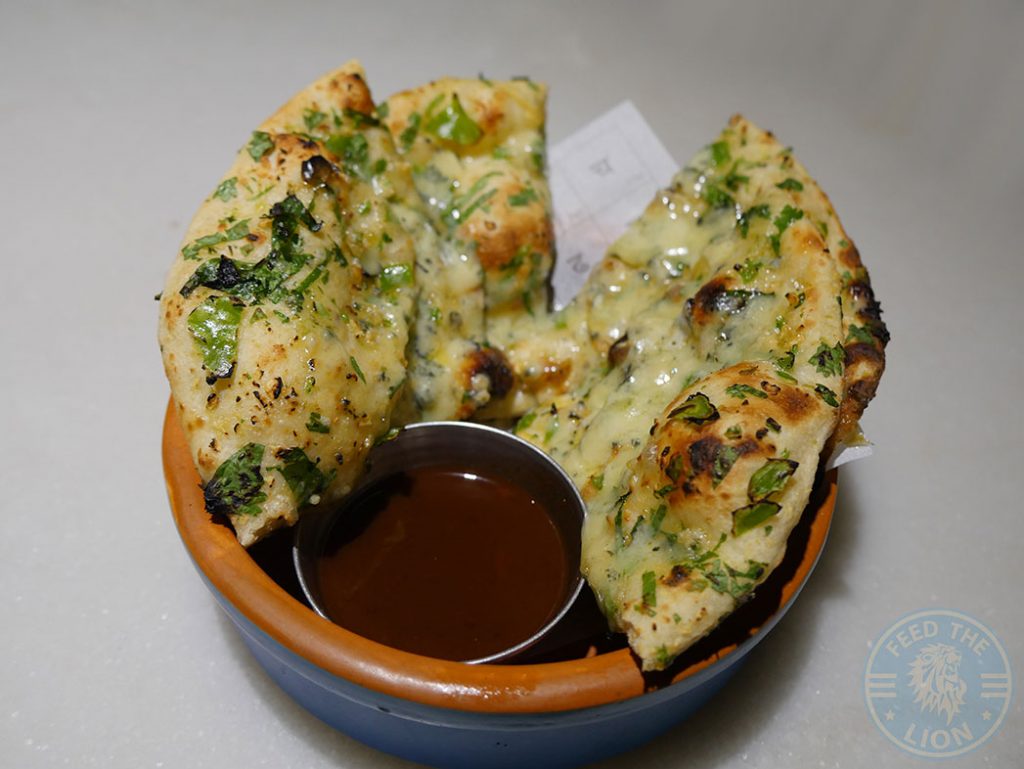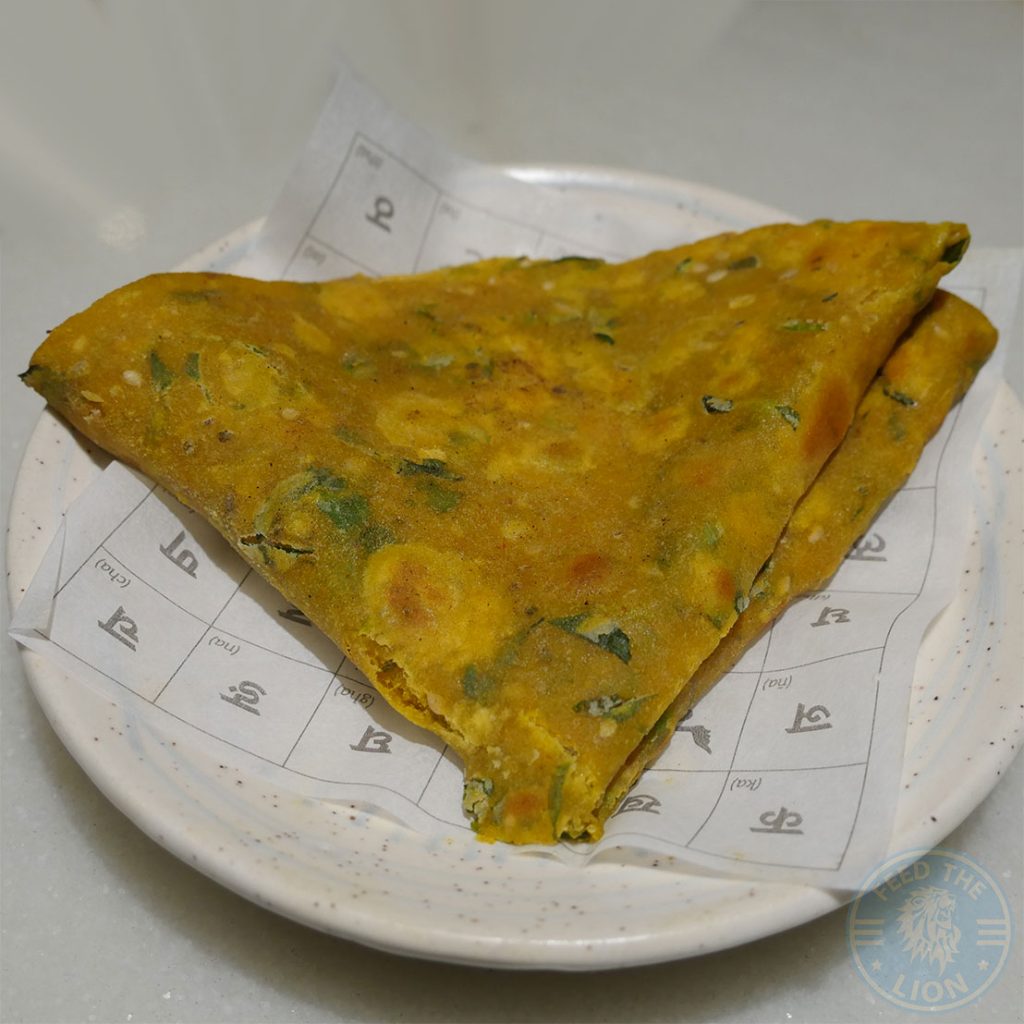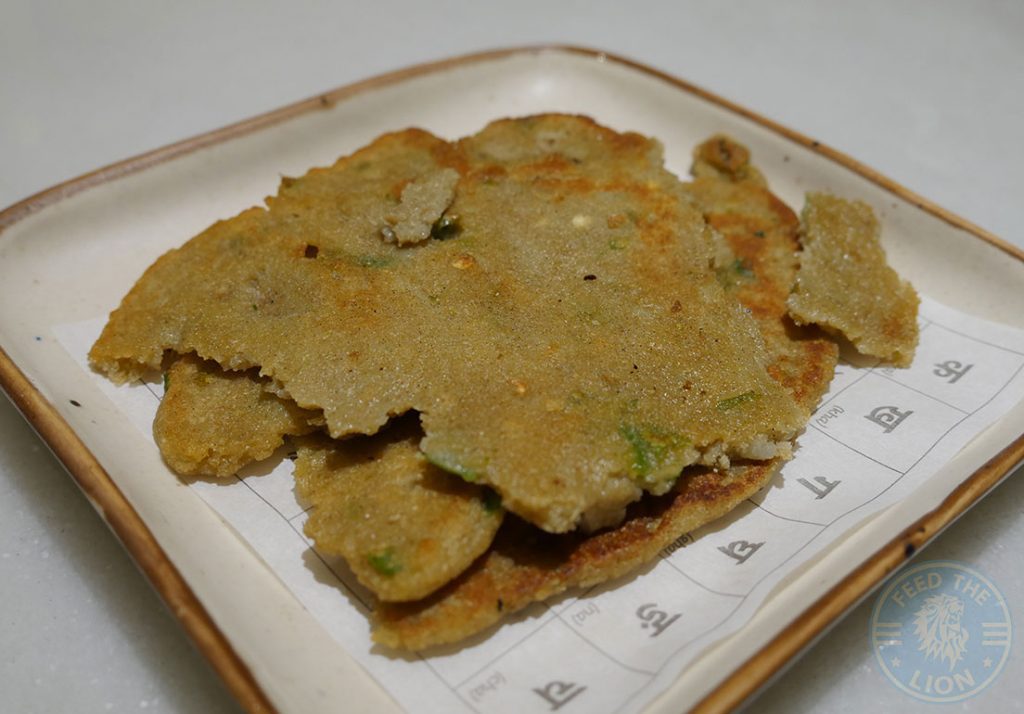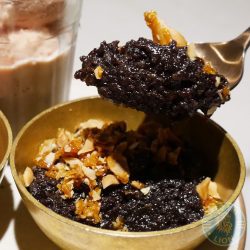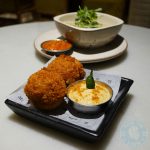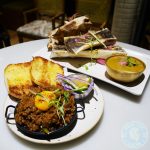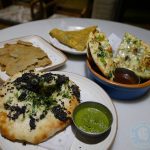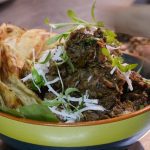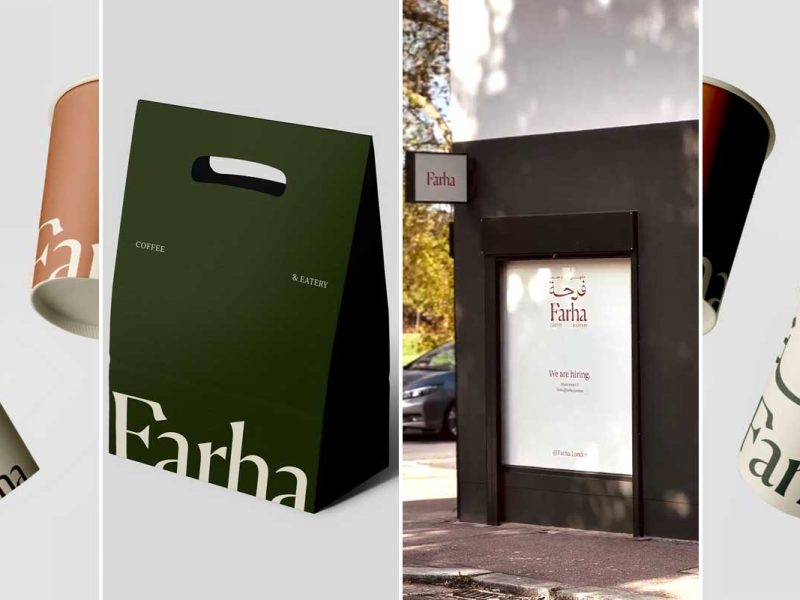Talli Joe (Indian) – Covent Garden
RESTAURANT CLOSED DOWN (Mar 2019)
Since opening in April of last year, Indian restaurant, Talli Joe, has already made a name for itself having recently been included in the Michelin Guide 2018 and being awarded the Michelin Plate for “good cooking” with “fresh ingredients”.
 That shouldn’t come as a surprise either with the man behind such an endeavour being classically-trained chef, Sameer Taneja – a man who used to cook for critically acclaimed chef and restaurateur Atul Kochhar at his Michelin-starred Benares.
That shouldn’t come as a surprise either with the man behind such an endeavour being classically-trained chef, Sameer Taneja – a man who used to cook for critically acclaimed chef and restaurateur Atul Kochhar at his Michelin-starred Benares.
While it is true that Talli Joe is “a casual, all-day drinking and dining destination”, with the word ‘talli’ meaning tipsy and not the traditional Indian metal food tray, it does offer a wide range of Halal options.
 More importantly, Sameer has personally confirmed with FtL, that these dishes are prepared and cooked both sans alcohol and any risk of cross contamination with the pork on the menu.
More importantly, Sameer has personally confirmed with FtL, that these dishes are prepared and cooked both sans alcohol and any risk of cross contamination with the pork on the menu.
Hence, although there is a large alcohol bar therein, this is located to one side of a fairly large and spacious restaurant, allowing for ample room and seating on the opposite side.
In fact, while the ground floor can comfortably accommodate for 80, there’s space available for private hire downstairs in the basement for an additional 15, with its own hole-in-the-wall cubicles.
DRINKS
Good looking beverages with the Apple & Basil by far the best of the trio. Packing a solid punch, the initial explosion of sharp, tangy lime is gradually mellowed by basil that’s left to linger in the background.
The Tutti Frutti is Talli Joe’s homage to the popular equivalent enjoyed across various parts of India. With the smooth mango at the top, subtly offset by the addition of tart grenadine, making way for that all too familiar sweet Tutti Frutti taste represented by the denser red syrup at the bottom, this was a decent attempt without being anything spectacular.
The apple in the Cucumber Cooler was mildly tart, and the cucumber amounted to nothing more than a hint. All in all, another refreshing drink, though the weakest of the three in terms of flavour.
CHAKNAS
This was certainly a first for us.
This wafer-thin Dosa Papad was actually, believe it or not, dehydrated dosa – a process that intensified the spicy flavour, resulting in a crispy, delicate papadum that went well with the yin and yang chutney mixtue of strong chilli and sweet textured coconut. Surprisingly good!
SMALL PLATES
This Crab Nargisi was an utterly delicious one, particularly with that tadka mayo – that’s right tadka (tempering). Strong and pungent, it added a wonderful tangy edge to what was otherwise a Nargisi crab kofta with a golden, über-crispy breadcrumbed exterior that coated the soft flesh of a crab and a medium-cooked Scotch-egg.
Always difficult to have the Scotch-egg soft-cooked!

Lobster Momo – Darjeeling style lobster momos, chicken stock, cucumber salad, served with chilli chutney, £MP (Market Price)
A stunning starter that turned out to be arguably the dish of this review!
What defined this Lobster Momo as something worthy of travelling to Talli Joe for was not just the combination of flavours, but that delicately-infused broth that was evidently more than just chicken stock.
You may be tempted in bringing the momo to the chutney dip; but we’d recommend mixing to taste some of the chutney into the broth à la Vietnamese Pho. Doing so will enrich the broth and give it a slightly fruity-chilli kick, while preparing you for an umami-moment at the end when all the momos are well and truly devoured, with the opportunity of downing a delicious chilli-chicken liquid mixture.
Texturally, the momos are as soft as you’d like, generously filled with light and tender lobster flesh, and topped with a dainty cucumber salad for some crunch and freshness.
Super comforting and worth buying two portions of irrespective of the lobster’s market price on the day.
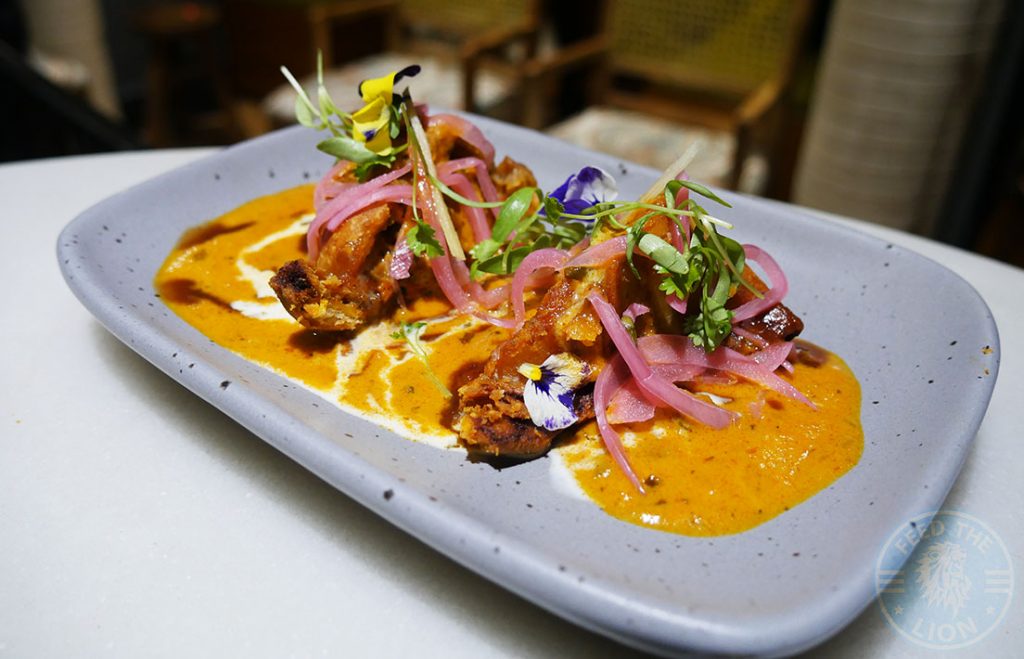
Old Delhi Butter Chicken Samosa – Tandoori Chicken thigh cooked with tomato & fenugreek, stuffed in a samosa, £5.75
When they say Tandoori chicken, they really do mean it. The smokiness of the barbecue was satisfyingly powerful, the sauce gently spiced, and the samosa stuffed with the chicken retaining much of its crunchy texture despite resting in the sauce.
Covered in a pickled red onion salad with green leaves and edible flowers, this was an attractively presented, original take on the classic butter chicken curry, and well balanced in terms of flavours, despite one Lion preferring more seasoning.
Covered in a fairly spicy marination paste, this single lamb chop piece was tender while still retaining a good bite.
 And while it was certainly tandoored, the marination mixture was slightly gritty in places and thus harsh to taste.
And while it was certainly tandoored, the marination mixture was slightly gritty in places and thus harsh to taste.
This harshness, however, was, to some extent, tempered by the lightly spiced and soft-textured rustic potato salad, with the pugency of the mustard seeds especially working in this regard.
Overall a commendable dish, though peculiarly presented on paper covered in an hitherto unknown alphabet (anyone recognise it?).
HALF PLATES

Parsee Venison Kheema Ghotala – Spicy venison mince scrambled with organic egg yolk, with a side of pao, £8.25
There aren’t many restaurants we know of that do a good kheema dish, let alone an exceptional one. This Parsee Venison Kheema Ghotala was beyond even that.
Owing perhaps to the lean nature of venison and its rich depth of flavour, this spicy-infused mince meat dish was so flavourful that it’s arguably one of the best we’ve had.
The addition of the perfectly cooked organic egg yolk not only enhanced its soft, velvety consistency, but gave it a beautiful silky edge.
However, if you’re looking to lift this to another level, then be certain to take advantage of the accompanying bowl of red onions and seeded green chillis, especially the latter which, if nibbled on with every other mouthful, provides that extreme chilli-earthy kick.
Also presented with wonderfully crispy, soft and well-buttered pao, or bap, that’s good for scooping clean the plate at the end.
 An intriguing twist on a nihari this, with a the veal bone marrow accompaniment.
An intriguing twist on a nihari this, with a the veal bone marrow accompaniment.
If it isn’t obvious already, then the idea, at least the way we figured it, is to scoop out that rich bone marrow into the nihari.
In doing so, the gelatinous nature of the marrow melts to alter the nihari’s composition and add a beautiful butteriness to it that transforms the dish’s otherwise semi-liquidy consistency to an altogether silky, velvety one.
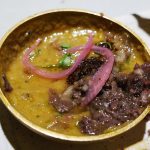 Taste-wise, it’s all very pleasant and controlled, with a mild spiciness to it and a warmth that’s delivered by the masalas therein.
Taste-wise, it’s all very pleasant and controlled, with a mild spiciness to it and a warmth that’s delivered by the masalas therein.
The addition of the kadak roti scrunched up into a ball, which is wholly crunchy in texture, not only completes the rustic nature of the dish conceptually speaking, but also points to the level of thought put into conceiving this Nihari Nalli.
Great ingenuity, right down to the last detail.
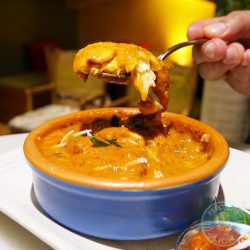 Aside from the thick-grained rice, there were two elements to this Konkani Sea Bass Curry which, when brought together, made for a fantastically flavoured meal.
Aside from the thick-grained rice, there were two elements to this Konkani Sea Bass Curry which, when brought together, made for a fantastically flavoured meal.
The first was the main element itself comprising of chunks of melt-in-your-mouth sea bass immersed in a vibrant orange and wonderfully well-measured sweet coconut sauce.
But, it was the second element which, when had with the curry, lifted it to another level, and that was the pungently strong, red pickled chutney that accompanied it. Its kick of chilli added some heat and sharp tartness to the dish that married well against the coconut’s sweetness, making this a satisfying eat.
As for the rice, then while one Lion would have preferred thin-grained rice, the other two had no qualms with its thick counterpart – well-cooked and doing the job.
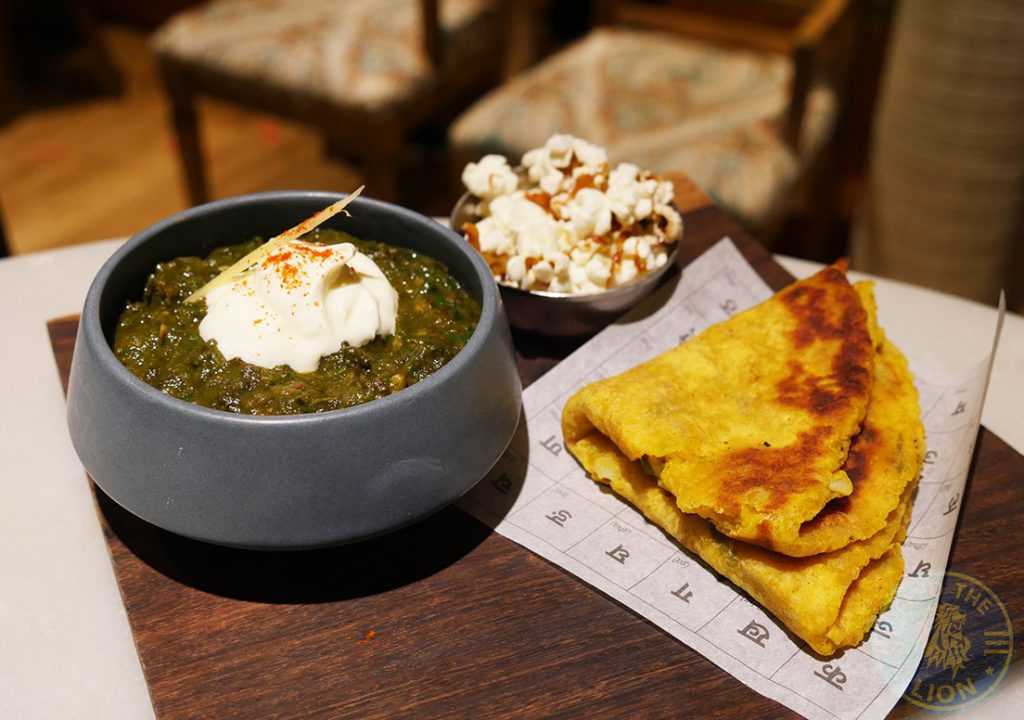
Sarson ka Saag – Mustard green saag topped with house crème fraiche, served with cornmeal bread, £10.50
Those of you who’ve actually had a bona fide Sarson ka Saag from the Punjab, will be familiar with the long and arduous process required in cutting those large, vivdly green spinach leaves before having to cook them down patiently, with lots of tedious stiring, for hours on end until a lush gloppy-cum-creamy consistency is achieved. Yes it’s a long process; but as anyone who’s had the pleasure will tell you, it’s more than worth the wait and effort. It truly is one of the great dishes of that region, and celebrated on both sides of the border.
So how close was Talli Joe’s? Well, taste-wise, this was close. It was well spiced and had that familiarly rich spinach flavour to it, which we all, having had the original, nostalgically relished. And the dollop of crème fraiche helped to temper the gentle heat therein.
Texturally, while this was a little on the stringy-side, it still managed to retain said consistency. But, we also appreciated the quirky take on the use of jaggery, or cane-sugar, that’s often added to impart a touch of sweetness. In this case, Chef Sameer’s playful twist was to serve a bowl of sweet popcorn covered in caramelised sugar, which also offered some crunch.
Neither is it often the case that an Indian restaurant offers cornmeal bread, or Makki/ Makkai ki Roti, with its respective saag dishes. Kudos, therefore, to the Chef in this regard. This version wasn’t exactly Punjab’s crispy, crunchy type, with lashings of butter to boot, but rather a soft, flaky version. Nevertheless, it was tasty and went well with the saag.
Overall, a wonderful trip down memory lane, and a dish which, if you’ve never had the original, is perhaps, as far as we know, as close to it as you’re going to get; and thus, worth trying.
A Jackfruit biryani?! Thank goodness we ordered this one. Not only was it something new to all three of us, but also an exciting little munch too.
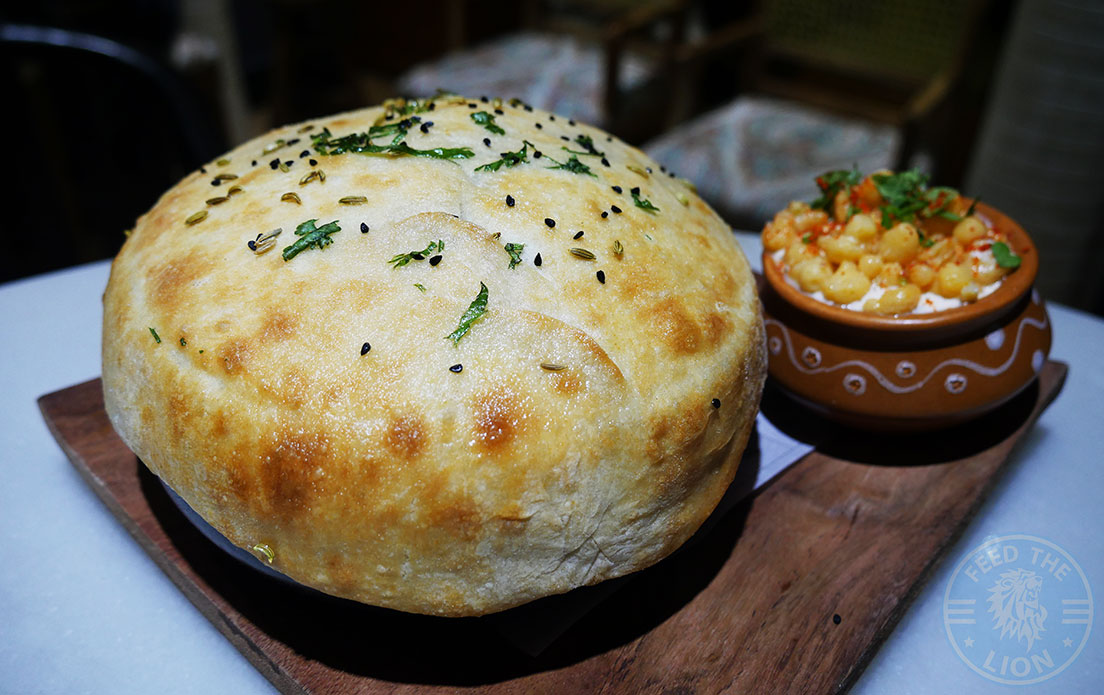 Okay, so it wasn’t exactly little. But who cares? It’s not often that you’re served biryani dum-style, right?
Okay, so it wasn’t exactly little. But who cares? It’s not often that you’re served biryani dum-style, right?
Following the fun part of cutting open the pastry top and inhaling the strong, fragrant aromas, we were confronted by an intriguing-looking Kathal Biryani.
Looking past the fact that this was fairly dry, the complexity of flavours made up of the strong herbal and floral tones was incredible.
What we had here was sweet and chilli notes of all kinds, a subtle herby-masala running through the background, the freshness of the mint leaves, the fragrance of the cardomon, dried flowers, you name it. Oh, and the jackfruit was a unique substitute for any meat, with its soft, fibrous texture, albeit again slightly on the dry side.
As such, we needed the entire content of that cumin-infused chick pea Boondi Raita to counter said dryness.
An original dish this and one which we wished hadn’t been so dry.
This in-your-face Kochi Beef Fry was a masala hit of epic proportions – hot, heady, and presented with a delicious flaky, buttery paratha.
But, given that it was fried, it was a little on the dry side. As such, we all felt that a yoghurt accompaniment to also help dampen the intensity of the spices would have been ideal.
SIDES
 What an original naan this was!
What an original naan this was!
How they managed to stuff this with that quantity of gooey blue cheese and still serve it so light and fluffy will remain a mystery.
What we do know is that the ultra-fresh mint chutney worked perfectly against the gentle pungency of the blue cheese and the potent taste and fragrance of the truffle sprinkling over the top.
The cheese on this crispy Garlic Naan went really well with the sweetness of this tamarind sauce.
An absolutely scrumptious Fenugreek Bread naan which you won’t find in a hurry elsewhere.
Soft and flaky with an anaseed taste to it.
DESSERTS
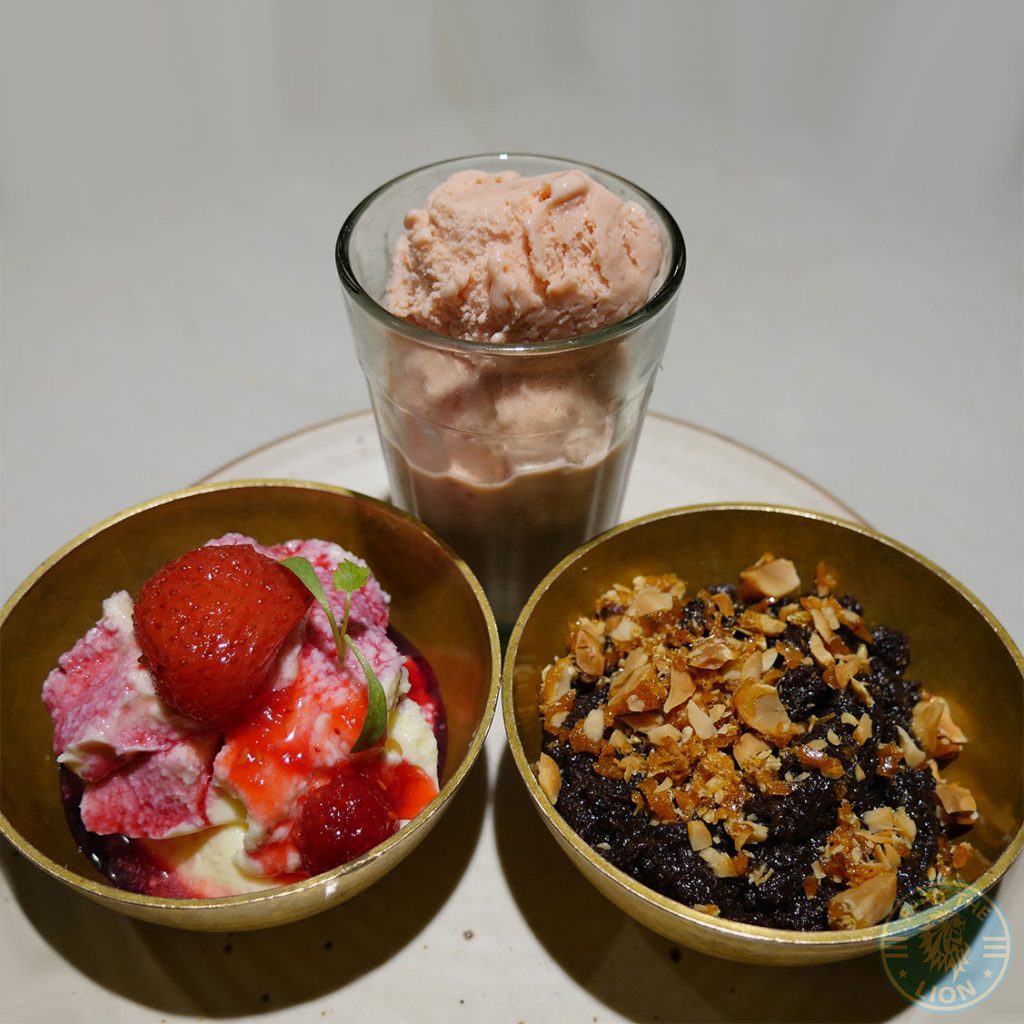
(Left) Berry Malai – Baked yoghurt, seasonal berries; (middle) Gulabo – Homemade rose-flavoured ice cream; (right) Black Gajar Halwa – Heritage black carrots & salted peanut brittle – £3.75 each
First up, the Black Gajar Halwa, which deservedly earned a spot in Time Out’s Top Ten Dishes of 2016.
Do not be fooled by its unassuming appearance; this is a really well conceived and executed dessert. What we had was simply heritage black carrot topped by salted peanut brittle. That’s it!
In return, however, the earthiness of the soft, sticky-crumbly carrot mixture, which had just a hint of sweetness to it, worked so well against the salty-sweetness of the crunchy brittle.
Doesn’t sound much, but we can assure you that this is the best Gajar ka Halwa we’ve had. Very original.
Having said that though, the Berry Malai wasn’t too far behind the above. The malai had a creamy, silky smoothness to it that was amazing in its own right. But when had with the assortment of berries, which had a gelatinous texture to them, all drizzled in a sweet strawberry syrup, it really was a scrumptious eat.
Lastly, the Gulabo – a beautifully smooth rose-water flavoured ice cream that’s light and refreshing, and perfect after a heavy meal.
- YES/ YES
- WIFI
What makes the menu such an exciting one, however, is that Sameer, as a classically trained Chef, has successfully managed to elevate and refine, with some quirky twists, some of India's timeless regional classics, and bring them into the modern restaurant scene.
And since Talli Joe does offer half-plates, that means you get outstanding, quality food at affordable prices that average around £10.
Drink - Apple & Basil
Starter - Lobster Momo
Main - Parsee Venison Kheema Ghotala
Dessert - Black Gajar Halwa
Be the first to leave a review.
Talli Joe
152-154 Shaftesbury Avenue,
London WC2H 8HL.
T: +44 (0)20 7836 5400 | W: www.tallijoe.com | E: [email protected]
Opening Hours: Mon-Sat 12:00–23:00 | Sun (lunch) 12:00–16:00



